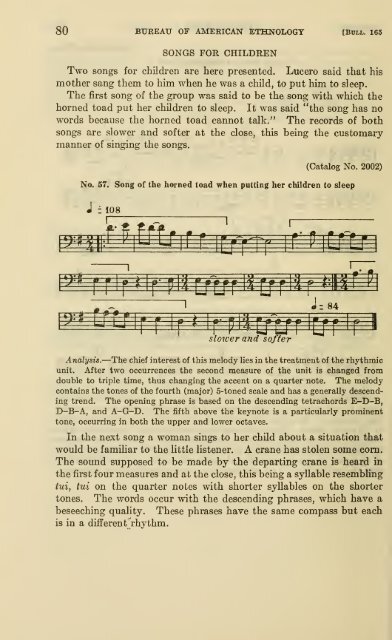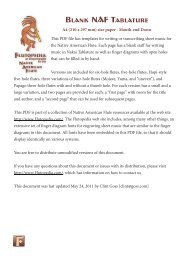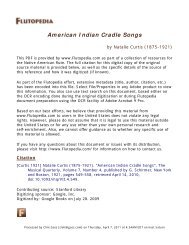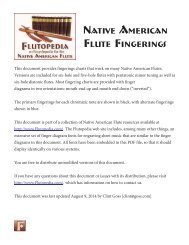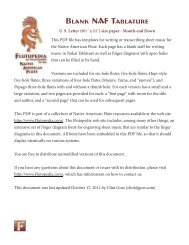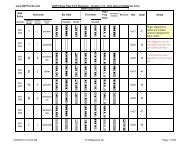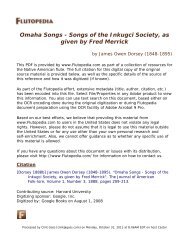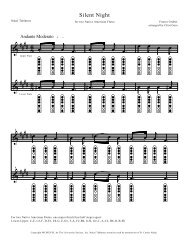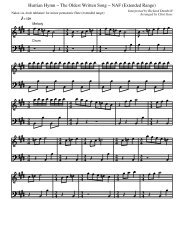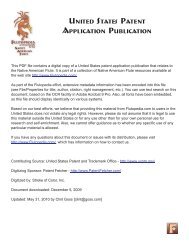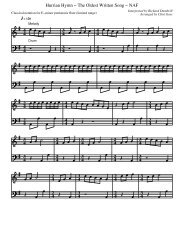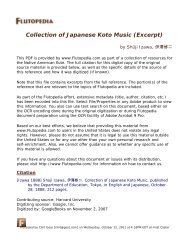Music of Acoma, Isleta, Cochiti, and Zuñi Pueblos - Flutopedia.com
Music of Acoma, Isleta, Cochiti, and Zuñi Pueblos - Flutopedia.com
Music of Acoma, Isleta, Cochiti, and Zuñi Pueblos - Flutopedia.com
You also want an ePaper? Increase the reach of your titles
YUMPU automatically turns print PDFs into web optimized ePapers that Google loves.
80 BUREAU OF AMERICAN ETHNOLOGY [BnLi,. 165<br />
SONGS FOR CHILDREN<br />
Two songs for children are here presented. Lucero said that his<br />
mother sang them to him when he was a child, to put him to sleep.<br />
The first song <strong>of</strong> the group was said to be the song with which the<br />
horned toad put her children to sleep. It was said "the song has no<br />
words because the horned toad cannot talk." The records <strong>of</strong> both<br />
songs are slower <strong>and</strong> s<strong>of</strong>ter at the close, this being the customary<br />
manner <strong>of</strong> singing the songs.<br />
(Catalog No. 2002)<br />
No. 57.<br />
Song <strong>of</strong> the horned toad when putting her children to sleep<br />
J i 108<br />
slower <strong>and</strong> s<strong>of</strong>ter<br />
Analysis.—The chief interest <strong>of</strong> this melody lies in the treatment <strong>of</strong> the rhythmic<br />
unit. After two occurrences the second measure <strong>of</strong> the unit is changed from<br />
double to triple time, thus changing the accent on a quarter note. The melody<br />
contains the tones <strong>of</strong> the fourth (major) 5-toned scale <strong>and</strong> has a generally descending<br />
trend. The opening phrase is based on the descending tetrachords E-D-B,<br />
D-B-A, <strong>and</strong> A-G-D. The fifth above the keynote is a particularly prominent<br />
tone, occurring in both the upper <strong>and</strong> lower octaves.<br />
In the next song a woman sings to her child about a situation that<br />
would be famihar to the little listener. A crane has stolen some <strong>com</strong>.<br />
The sound supposed to be made by the departing crane is<br />
heard in<br />
the first four measures <strong>and</strong> at the close, this being a syllable resembling<br />
tui, tui on the quarter notes with shorter syllables on the shorter<br />
tones. The words occur with the descending phrases, which have a<br />
beseeching quality. These phrases have the same <strong>com</strong>pass but each<br />
is in a different Vhythm.


